Aquamarine Quality Factors
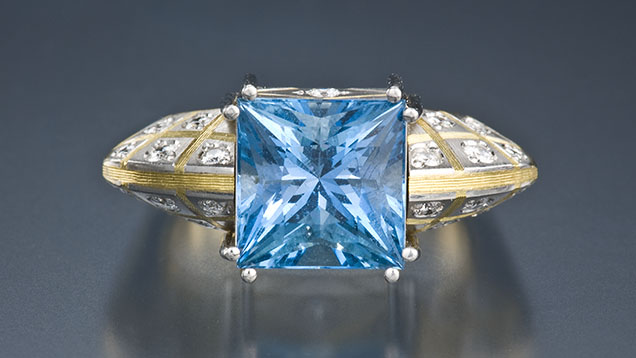
Color
Aquamarine’s color range is very narrow: It can be blue, very slightly greenish blue, greenish blue, very strongly greenish blue, or green-blue. The gem’s most valuable color is a dark blue to slightly greenish blue with moderately strong intensity. In general, the purer and more intense the blue color, the more valuable the stone. Most aquamarine is a light greenish blue.
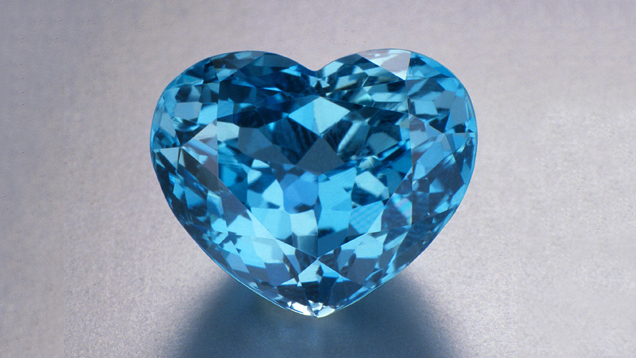
This superb 32.10-carat heart-shaped Brazilian aquamarine shows the gem's finest color, a moderately strong, medium-dark, very slightly greenish blue. - Courtesy M.Chung Gemstones and Fine Jewelry Co.
Although some buyers prefer the more greenish natural color, most of the aquamarine in the market was heat-treated to give it more of a pure blue.Fashioned aquamarines often have to be fairly large—generally over 5 carats—to show intense, dark color. Although small gems are rarely saturated enough to be attractive, stones from some mines in Africa—Nigeria, Madagascar, and Mozambique, for example—are known for intense color in sizes under 5 carats. For this reason, smaller, top-color stones might sell for more per carat than larger stones of the same color.
Clarity
Most faceted aquamarines are eye-clean. Some crystals might contain liquid inclusions, but clarity characteristics are few or absent in most finished gems. Stones with eye-visible inclusions are usually fashioned into cabochons, beads, or carvings.
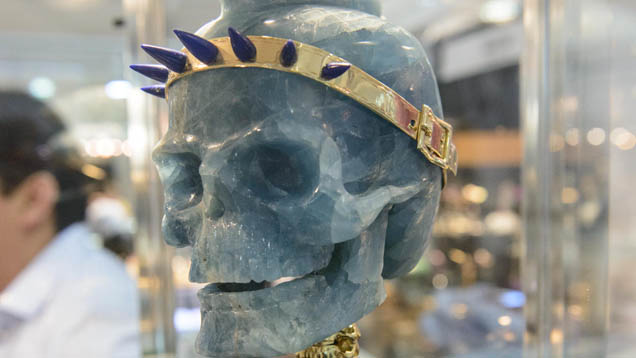
Carvings are popular for translucent to opaque aquamarine. - Courtesy Neoart Peru
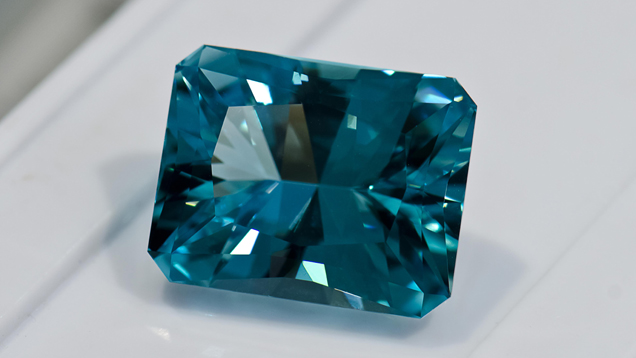
Faceted aquamarine usually has no eye-visible inclusions. - Courtesy Dudley Blauwet

This very greenish aquamarine cabochon has enough parallel inclusions to display a cat’s-eye.
CutAquamarines can be cut into almost any shape, but cutters often fashion them as emerald cuts or as round or oval brilliants. The rough is fairly plentiful, so well-cut stones are fairly common. The gemstone’s hardness and transparency make it popular with designers, artists, and carvers. Gem sculptors use aquamarine for fantasy cuts and ornamental objects.
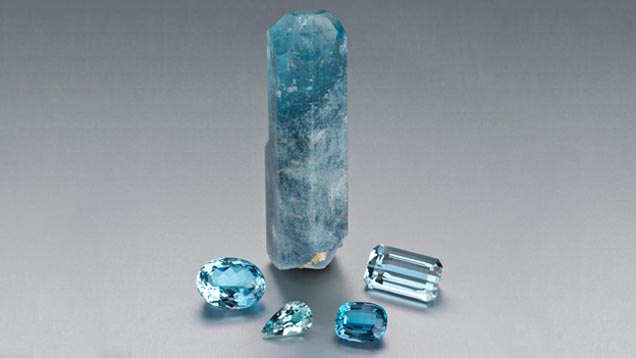
Aquamarine can be cut in a variety of standard shapes.
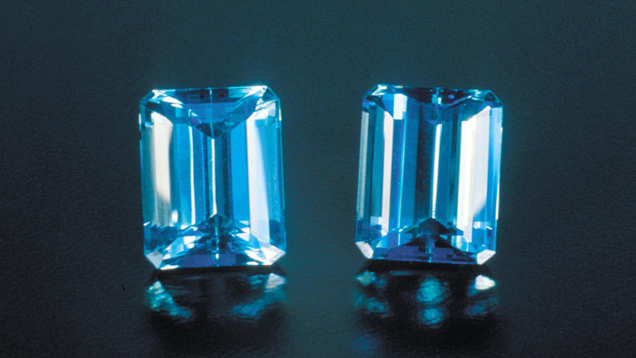
Emerald cuts are among the common aquamarine cutting styles. - Courtesy ICA
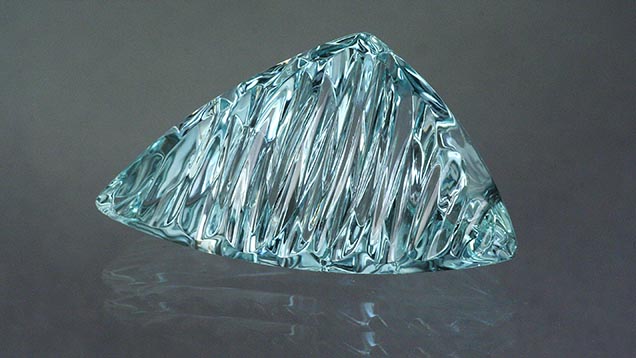
Aquamarine is a great medium for artistic designer cuts like this 10.37-carat beauty. - Lydia Dyer, gem courtesy John Dyer & Co.
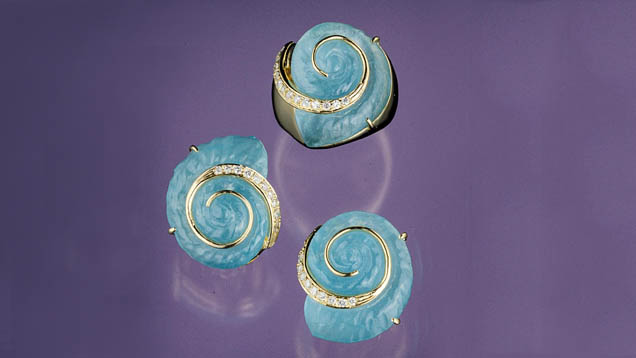
Aquamarine that’s too included for faceting is often carved and set into designer jewelry. - © GIA and Tino Hammid
Carat Weight Aquamarine crystals come in sizes from very small to very large—some even up to 100 lbs. (45 kg). While large stones are readily available, it’s difficult to use them in jewelry, so there’s less demand for them, except as center stones. As a result, per-carat prices tend to decrease for sizes above 25 carats.
Many very large aquamarine crystals have been discovered. The largest Brazilian aquamarine on record was found in 1910, in Minas Gerais, Brazil. It weighed 244 lbs. (110 kg) and measured 19 in. (48 cm) long and 15 in. (38 cm) in diameter.
.jpg)


